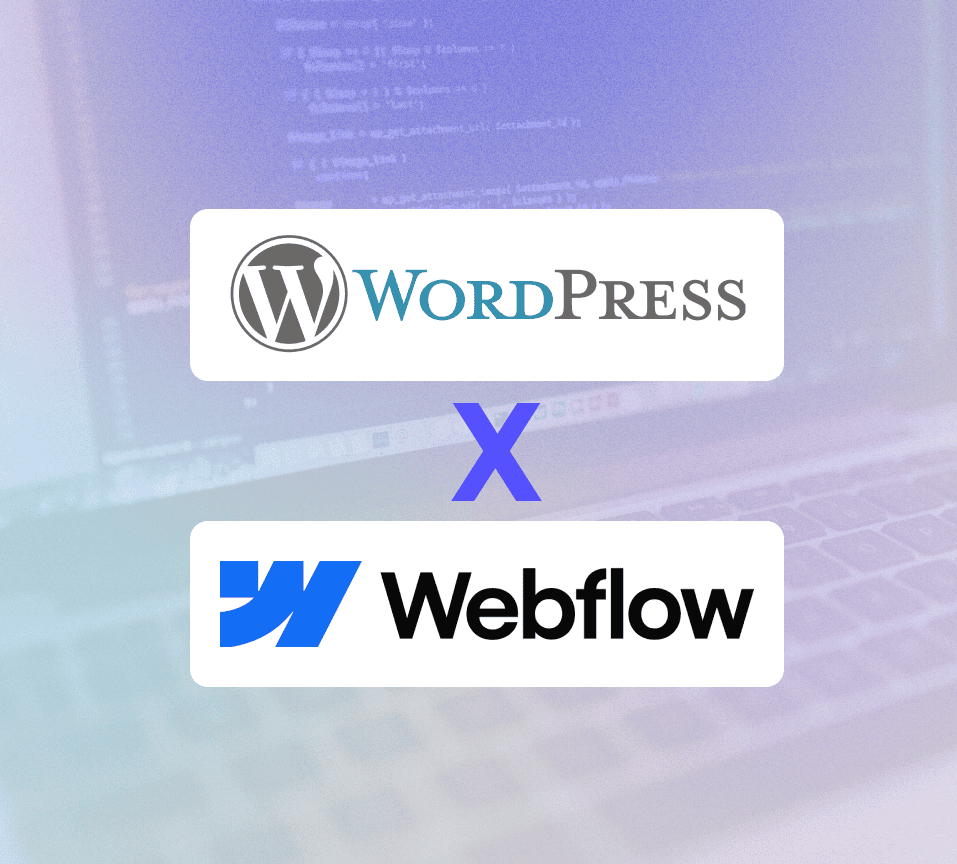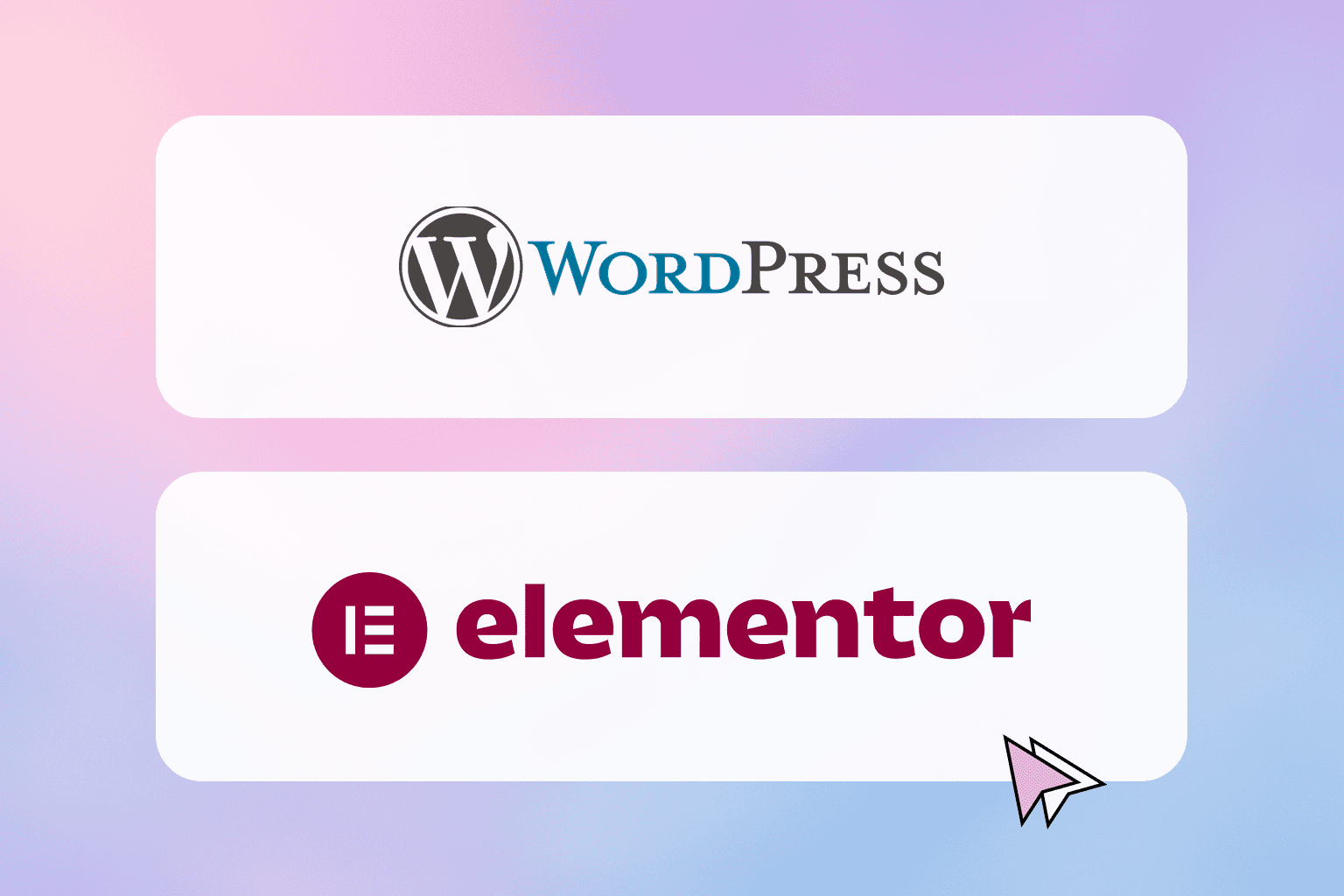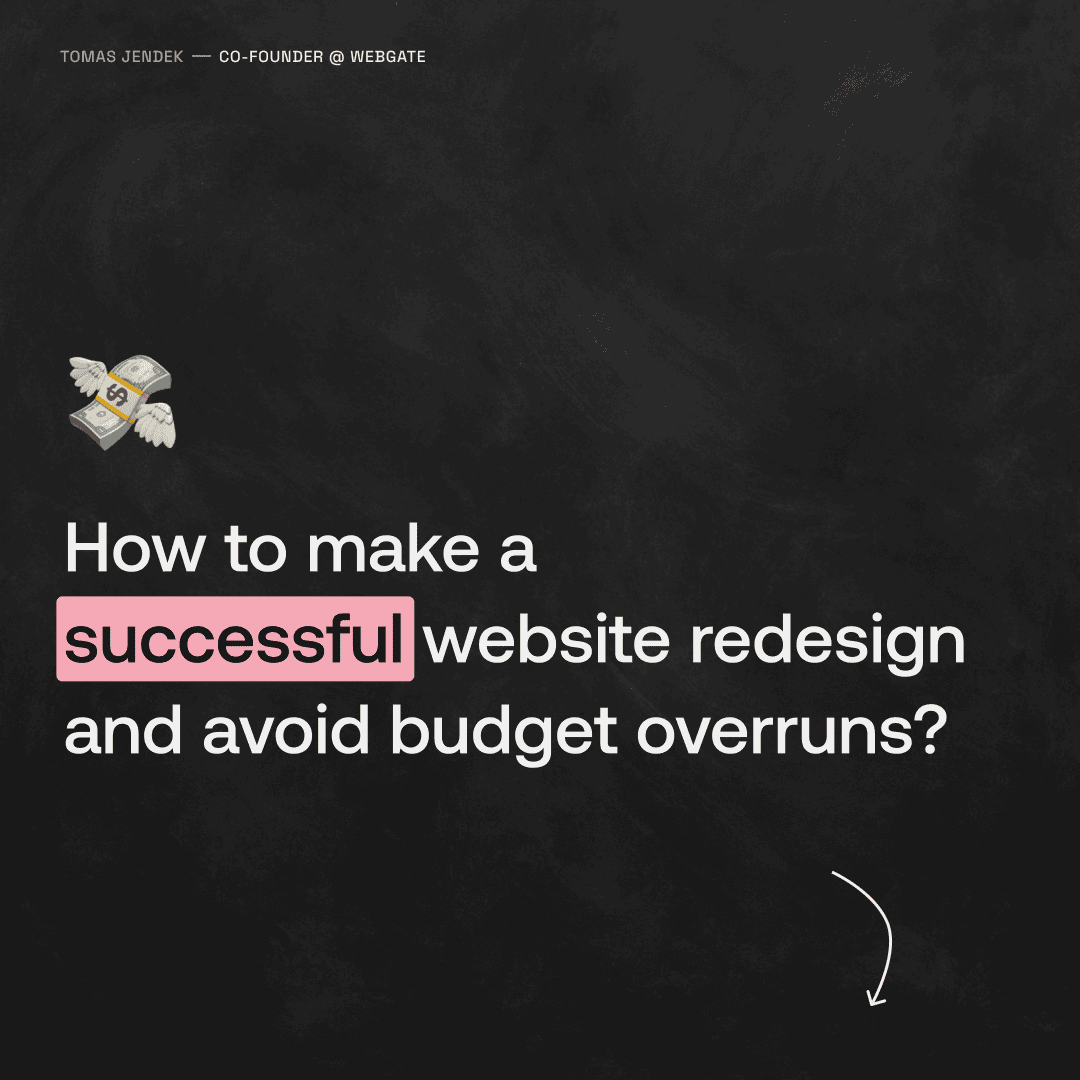In today’s digital era, enterprises need robust, scalable, and flexible websites to stay competitive. Choosing the right platform is crucial for building a powerful online presence. Two popular options are WordPress and Webflow. But which one is the best fit for enterprise-level needs? In this article, we’ll compare both platforms to help you make an informed decision.
1. SEO and marketing capabilities
WordPress: When it comes to SEO, WordPress is a top performer, especially for enterprises aiming to dominate search engine rankings. The platform offers a wide range of powerful SEO plugins like Yoast SEO and SEOPress that provide advanced control over key SEO elements such as meta tags, XML sitemaps, schema markup, and more. These tools enable in-depth optimization for on-page and technical SEO, helping enterprises maximize visibility. WordPress also integrates effortlessly with digital marketing tools like Google Analytics, CRM systems, and marketing automation platforms, making it an ideal choice for SEO-driven enterprises.
Webflow: Webflow includes solid built-in SEO features like custom meta tags, alt text, and sitemap generation. While these tools are sufficient for basic SEO needs, they lack the advanced functionality and variety of third-party plugins available in WordPress. For enterprises with heavy SEO requirements, Webflow may feel limiting, as it doesn’t offer the same depth in optimization or integration with broader marketing tools. While Webflow can handle general SEO tasks, WordPress provides a more comprehensive solution for enterprises focused on maximizing search engine performance.
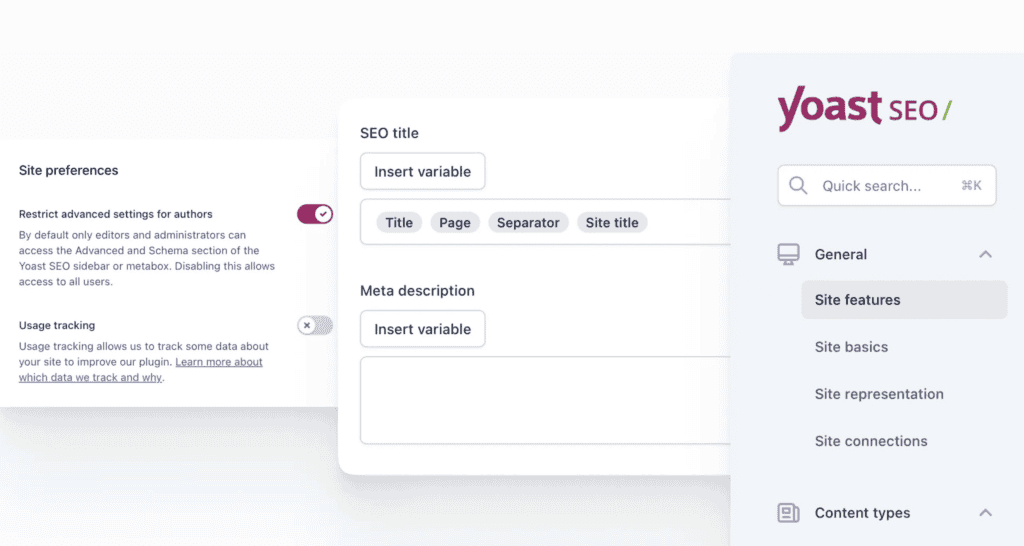
2. Cost-effectiveness
WordPress: Thanks to its open-source nature, WordPress is highly cost-effective for enterprises. The core software is free, allowing businesses to allocate their budget toward other essential elements like hosting, premium themes, and plugins. Enterprises can choose between various hosting options, from affordable shared hosting to more robust managed WordPress hosting services offering enhanced security and support. The flexibility in selecting paid plugins or custom development allows businesses to scale their investment based on their needs, giving them control over long-term costs. This modular approach makes WordPress a budget-friendly option, especially for large-scale projects.
Webflow: Webflow, on the other hand, follows a subscription-based pricing model, which can become expensive for enterprises. Webflow’s plans include hosting and CMS features but increase significantly as you add more users, require advanced features, or scale up the number of pages and sites. While Webflow offers convenience with all-in-one pricing, the cost escalates quickly, particularly for businesses with complex needs or high-traffic sites. For enterprises managing multiple websites or requiring advanced customization, Webflow’s pricing may feel restrictive compared to the more flexible and potentially lower-cost options available with WordPress.
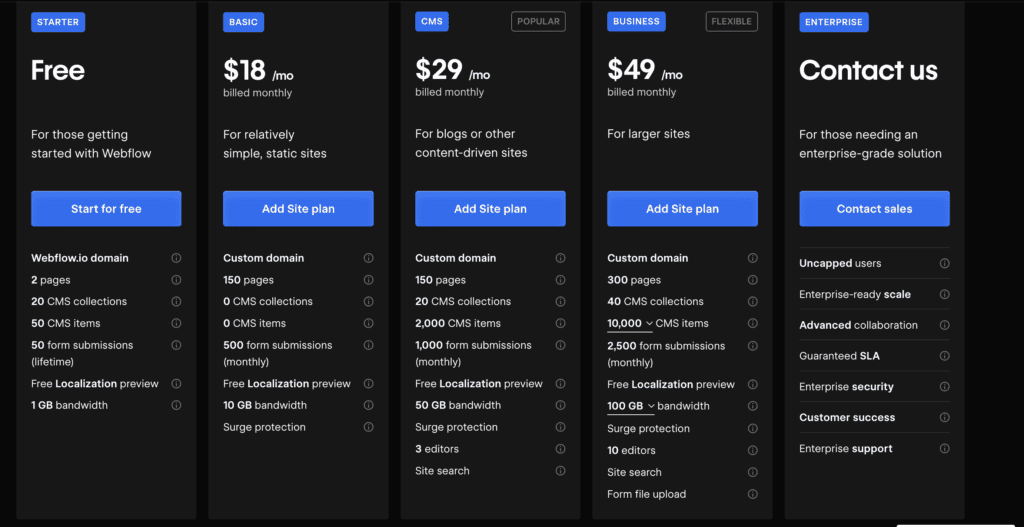
3. Collaboration and workflow management
WordPress: For enterprises where collaboration is essential, WordPress offers robust features and plugins that enhance teamwork and streamline workflows. The platform supports content scheduling, editorial calendars, and detailed user role management, allowing teams to define specific permissions for writers, editors, and administrators. Plugins like Edit Flow and User Role Editor extend these capabilities by providing tools for editorial comments, content statuses, and custom roles. This comprehensive approach ensures that large teams can work together efficiently, with clear processes for content creation, review, and publication.
Webflow: Webflow includes basic collaboration features such as real-time co-editing and the ability for team members to make site changes concurrently. However, its collaboration tools are not as advanced or extensive as those available in WordPress. Webflow offers limited user roles and lacks a wide range of plugins to enhance workflow management. This can be restrictive for enterprises that require sophisticated editorial workflows, detailed permission settings, and advanced scheduling options. While suitable for smaller teams or less complex projects, Webflow may not meet the collaboration needs of larger enterprises seeking comprehensive workflow solutions.
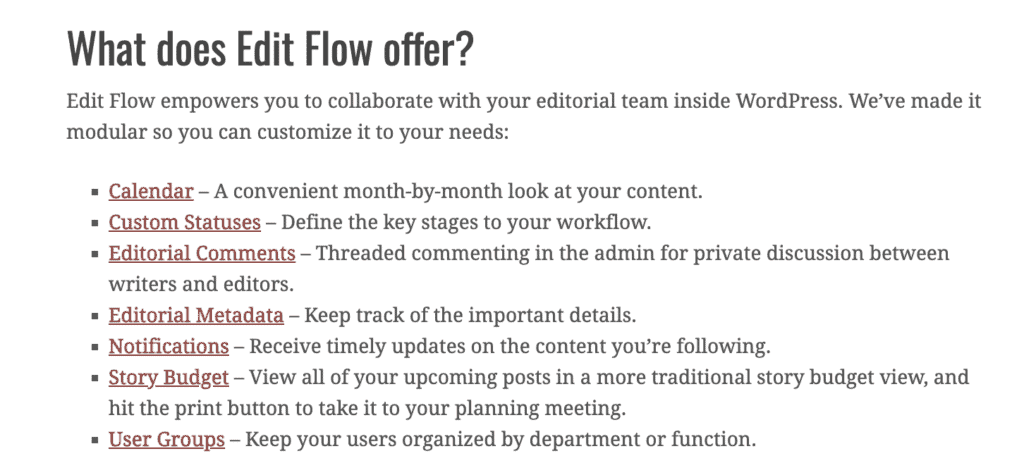
4. Flexibility and customization
WordPress is renowned for its unparalleled flexibility and extensive customization options. As an open-source platform, it offers thousands of plugins and themes that allow businesses to tailor their websites without significant coding. Here’s why WordPress stands out for enterprises:
- Extensive Plugin Ecosystem: With over 55,000 plugins, you can add virtually any functionality—from e-commerce and SEO tools to security enhancements.
- Scalability: WordPress can handle high traffic volumes and large amounts of content, making it ideal for growing enterprises.
- Custom Development: Its open-source nature allows developers to create bespoke solutions unique to your business needs.
- Community Support: A massive global community contributes to continuous improvements, security updates, and troubleshooting assistance.
Webflow offers a visual design approach that appeals to designers who prefer a code-free environment. While it’s excellent for rapid prototyping and visually stunning designs, it has some limitations for enterprises:
- Limited Customization: Lacks the depth of plugins and themes that WordPress provides, restricting advanced functionality.
- Third-Party Integrations: Fewer integration options can hinder the addition of essential enterprise tools like CRM systems or advanced analytics.
- Scalability Challenges: May not handle complex, large-scale websites as efficiently, potentially impacting performance during high traffic periods.
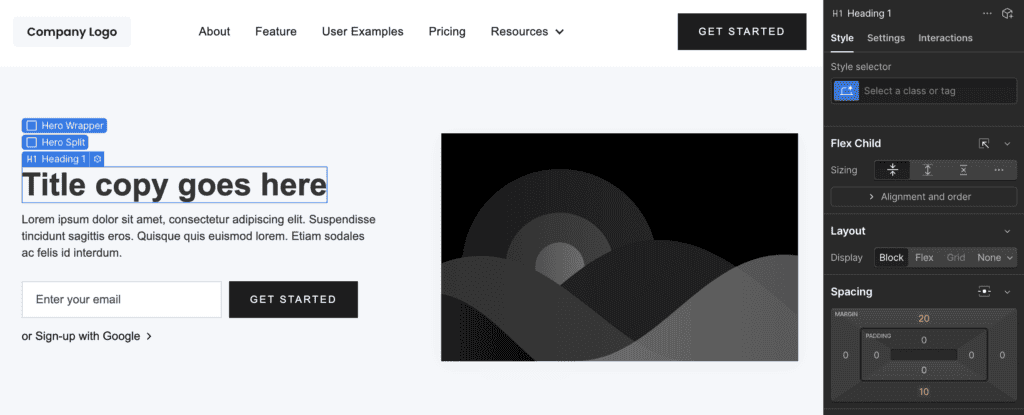
Summary
Choosing between WordPress and Webflow depends on your enterprise’s specific needs. If you prioritize design simplicity and a visual editor, Webflow might suffice. However, for most enterprises looking for depth, scalability, and extensive customization, WordPress stands out as the best choice.
Customization and Flexibility
- WordPress: Offers extensive customization with themes and plugins. Ideal for enterprises needing specific functionalities.
- Webflow: Great for design customization but limited in functional extensibility.
Ease of Use
- WordPress: Has a steeper learning curve but offers more control. Knowledge of coding can enhance customization.
- Webflow: User-friendly with a visual editor, suitable for those without coding experience.
SEO Capabilities
- WordPress: Robust SEO plugins like Yoast SEO provide advanced optimization features.
- Webflow: Built-in SEO tools are decent but lack the advanced capabilities found in WordPress plugins.
Cost Considerations
- WordPress: Free to use, but costs come from hosting, premium themes, and plugins.
- Webflow: Operates on a subscription model, which can become expensive as you scale.



